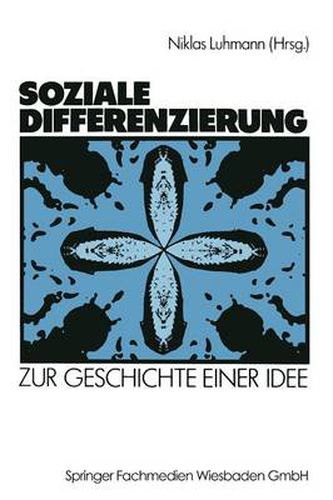Readings Newsletter
Become a Readings Member to make your shopping experience even easier.
Sign in or sign up for free!
You’re not far away from qualifying for FREE standard shipping within Australia
You’ve qualified for FREE standard shipping within Australia
The cart is loading…






This title is printed to order. This book may have been self-published. If so, we cannot guarantee the quality of the content. In the main most books will have gone through the editing process however some may not. We therefore suggest that you be aware of this before ordering this book. If in doubt check either the author or publisher’s details as we are unable to accept any returns unless they are faulty. Please contact us if you have any questions.
* Diese Arbeit greift in grossem Umfang auf mein: Making Sense of Marx zuruck, das demnachst in der Cambridge University Press erscheint. Fur viele hilfreiche Gesprache danke ich G. A. Cohen und John Roemer. 1 Marx, Theorien uber den Mehrwert, Erster Teil, MEW, 26.1, Berlin 1973, S. 363-364. 2 Karl Marx, Kapital III, MEW 25, Berlin, S. 614. 3 Vgl. M. Olson, The Logic of Collective Action, Cambridge, Mass.: Harvard University Press, 1965. 4 Genaue Literaturhinweise in meinem demnachst erscheinenden Buch. 5 Marx, Kapital III, MEW 25, S. 893. 6 ebd. 7 J. Coleman (Power and the Structure of Society, New York: Norton, 1974) insistiert auf diesem Punkt. 8 Vgl. J. Roemer, A General Theory of Exploitation and Class, Cambridge, Mass.: Harvard University Press, 1982, in bezug auf eine Darstellung der Relation von Ausbeutungs-und Klassenstatus. 9 Vgl. G. A. Cohen, Karl Marx’s Theory of History: A Defence, Oxford: Oxford Univer- sity Press, 1978, S. 70ff. und Roemer, a.a.O., S. 81. 10 G. E. M. de Ste Croix, The Class Struggle in the Ancient World, London: Duckworth, 1981, S. 121. 11 Roemer, a.a.O., Kap. 2 und 4. 12 Ein Modell diesen Typs gibt Roemer in Why labor classes? (unveroeffentlichtes Manu- skript). 13 Das Verhalten des Gutsbesitzers konnte z. B. optimal sein, wenn das Ziel ist, die Arbeits- stunden, die abhangig sind von einer Einschrankung des Konsums, zu minimieren und dann soviel wie moeglich zu konsumieren, wenn keine Arbeit involviert ist.
$9.00 standard shipping within Australia
FREE standard shipping within Australia for orders over $100.00
Express & International shipping calculated at checkout
This title is printed to order. This book may have been self-published. If so, we cannot guarantee the quality of the content. In the main most books will have gone through the editing process however some may not. We therefore suggest that you be aware of this before ordering this book. If in doubt check either the author or publisher’s details as we are unable to accept any returns unless they are faulty. Please contact us if you have any questions.
* Diese Arbeit greift in grossem Umfang auf mein: Making Sense of Marx zuruck, das demnachst in der Cambridge University Press erscheint. Fur viele hilfreiche Gesprache danke ich G. A. Cohen und John Roemer. 1 Marx, Theorien uber den Mehrwert, Erster Teil, MEW, 26.1, Berlin 1973, S. 363-364. 2 Karl Marx, Kapital III, MEW 25, Berlin, S. 614. 3 Vgl. M. Olson, The Logic of Collective Action, Cambridge, Mass.: Harvard University Press, 1965. 4 Genaue Literaturhinweise in meinem demnachst erscheinenden Buch. 5 Marx, Kapital III, MEW 25, S. 893. 6 ebd. 7 J. Coleman (Power and the Structure of Society, New York: Norton, 1974) insistiert auf diesem Punkt. 8 Vgl. J. Roemer, A General Theory of Exploitation and Class, Cambridge, Mass.: Harvard University Press, 1982, in bezug auf eine Darstellung der Relation von Ausbeutungs-und Klassenstatus. 9 Vgl. G. A. Cohen, Karl Marx’s Theory of History: A Defence, Oxford: Oxford Univer- sity Press, 1978, S. 70ff. und Roemer, a.a.O., S. 81. 10 G. E. M. de Ste Croix, The Class Struggle in the Ancient World, London: Duckworth, 1981, S. 121. 11 Roemer, a.a.O., Kap. 2 und 4. 12 Ein Modell diesen Typs gibt Roemer in Why labor classes? (unveroeffentlichtes Manu- skript). 13 Das Verhalten des Gutsbesitzers konnte z. B. optimal sein, wenn das Ziel ist, die Arbeits- stunden, die abhangig sind von einer Einschrankung des Konsums, zu minimieren und dann soviel wie moeglich zu konsumieren, wenn keine Arbeit involviert ist.